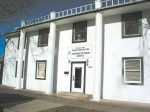School district urges parents to return federal survey cards

The Mountain Home School District began distributing this week the Federal Impact Aid Survey cards, which ultimately represents a crucial piece of funding for the schools.
The cards provide the federal government with information to determine how much Impact Aid money the school district will receive.
Impact aid is a form of funding designed to replace a portion of the lost property tax revenue from federal lands that are exempt from local taxes, such as Mountain Home Air Force Base, and is vital to the district's financing.
Students in the district are placed in one of three classifications, based on the confidential survey. "A" students are those whose families live on base (or other federal tax-exempt land). The district gets the most amount of funding from those students. "B" students are those who have a family member that works for a federal entity, such as the National Guard, the BLM, the Forest Service and other federal facilities or agencies, including the airbase. The district gets a reduced amount of funding for those students.
The third category are students that don't qualify for either and the district gets no Impact Aid money for them.
Overall, with the large number of federal workers in the area, most of them living or working on base, the school district winds up receiving about $1.3 million a year in Impact Aid funds, a significant part of its overall $22 million budget.
To qualify for any Impact Aid money, the district must have a minimum number of students in each of the A and B categories. Earlier this year, the district was concerned that because of changing demographics on base, where there are fewer school-age students than there used to be, it might actually drop below one of the threshold levels. But an unexpected influx of students this fall eased some of those concerns.
Unlike most school districts, because of all the transfers of personnel that occur during the summer on base, the Mountain Home School District has a hard time projecting how many students it will have in each grade each fall. This year, for the first time in years, the overall enrollment numbers were actually up, although the district remains concerned about the number of "B" students that live in town. That number has been dropping over the years to near threshold levels.
But turning in the cards is vital to the district, since they can only use the actual cards in hand to apply for the Impact Aid funding. "Also," Supt. Tim McMurtrey said, "we have to go through every card to make sure it's properly filled out and signed. If it isn't, we can't use it."
McMurtrey said it is important each and every card be returned, even those from families that don't live on federal land or work for the federal government. They help develop an overall demographic picture of the district.
Once the cards are turned into the federal government, the district eventually gets paid for its "A" and "B" students, based on a formula Congress sets each fall, which is months after the district's budget has to be set. "It makes budgeting a little tricky," McMurtrey said. "We never know for sure how much we're going to get." And, payments can sometimes be delayed months, or in some cases even years. "It can be a real nightmare, although eventually we do get it. But our budgeting is never as cut and dried as a lot of other districts."
The survey cards should be returned as quickly as possible. The must be turned into the federal government by the end of the month.
